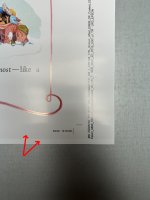Gregg
Well-known member
Hi,
We're in the process of pitching the idea of ditching wet-proofs (especially for digitally created artwork) and getting digital proofs, instead.
I've poked around on this site and online, in general, but I am unable to find a concise breakdown on the different types of digital proofs (Epson, Iris, Indigo, etc).
I would love to gather information on each proofing method, pros and cons, etc.
Can anyone help?
We're in the process of pitching the idea of ditching wet-proofs (especially for digitally created artwork) and getting digital proofs, instead.
I've poked around on this site and online, in general, but I am unable to find a concise breakdown on the different types of digital proofs (Epson, Iris, Indigo, etc).
I would love to gather information on each proofing method, pros and cons, etc.
Can anyone help?














